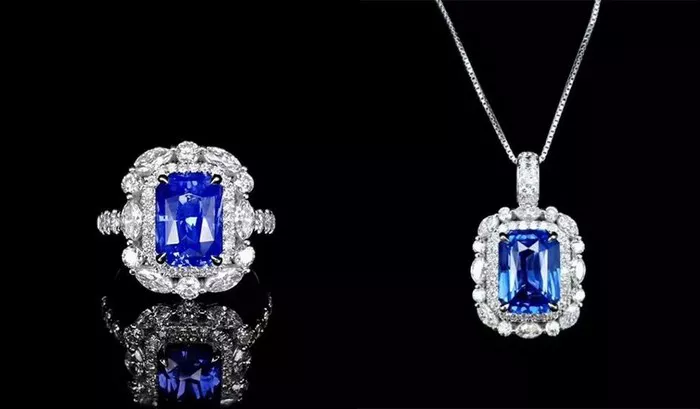Sapphires are one of the most sought-after gemstones in the world, prized for their stunning beauty, durability, and rich color. However, not all sapphires are created equal, and determining the quality of a sapphire can be a complex process. In this article, we will explore the key characteristics that define a good quality sapphire, including color, clarity, cut, and carat weight. By understanding these factors, you can confidently evaluate sapphires and choose the perfect gemstone for your needs.
Understanding Sapphires
Sapphires are a variety of the mineral corundum, which is composed of aluminum oxide. While corundum is typically clear and colorless, trace elements such as iron, titanium, and chromium can give rise to a variety of colors in sapphires. The most common color of sapphire is blue, ranging from light sky blue to deep royal blue. However, sapphires can also be found in other colors such as pink, yellow, green, purple, and orange, with each color variation having its own unique beauty and appeal.
Sapphires are known for their exceptional hardness, ranking 9 on the Mohs scale of mineral hardness, just below diamonds. This makes sapphires extremely durable and resistant to scratching, making them an ideal choice for jewelry that is worn daily.
What Makes a Good Quality Sapphire?
When evaluating the quality of a sapphire, there are several key factors to consider:
Color: The color of a sapphire is perhaps the most important factor in determining its quality and value. The most highly prized sapphires exhibit a rich, vibrant color with excellent saturation and tone. In blue sapphires, the most desirable color is a medium to dark blue hue with a slight undertone of violet or purple. The color should be evenly distributed throughout the stone, with no zoning or color banding. Sapphires with intense, vivid color are considered the most valuable, while lighter or less saturated stones may be less desirable.
Clarity: Clarity refers to the presence of inclusions or internal flaws within a sapphire. While some inclusions are expected in natural gemstones, sapphires with minimal to no visible inclusions are considered the most valuable. However, it’s important to note that completely flawless sapphires are extremely rare and command a premium price. Inclusions that are visible to the naked eye or affect the overall transparency of the stone can detract from its beauty and value.
Cut: The cut of a sapphire refers to its shape, proportions, and overall craftsmanship. A well-cut sapphire will exhibit optimal brilliance, sparkle, and symmetry, enhancing its overall beauty and appeal. The most popular cuts for sapphires include round, oval, cushion, emerald, and pear, with each cut showcasing the unique color and clarity of the stone. The cut should be symmetrical and proportionate, with no visible windowing or extinction.
Carat Weight: Carat weight refers to the size of a sapphire, with larger stones generally being more valuable than smaller ones. However, the value of a sapphire is not solely determined by its size; other factors such as color, clarity, and cut also play a significant role. It’s important to consider the overall quality of the sapphire when evaluating its value, rather than focusing solely on carat weight.
How Can You Tell a Good Quality Sapphire?
When evaluating a sapphire, it’s important to examine the stone closely and consider the following factors:
Color: Look for a sapphire with a rich, vibrant color that is evenly distributed throughout the stone. Avoid stones with zoning or color banding, as these can detract from the overall beauty and value of the sapphire.
Clarity: Examine the sapphire for any visible inclusions or flaws, particularly those that are visible to the naked eye or affect the overall transparency of the stone. Look for sapphires with minimal to no visible inclusions for the best quality and value.
Cut: Assess the cut of the sapphire for symmetry, proportions, and overall craftsmanship. Look for a well-cut sapphire that exhibits optimal brilliance, sparkle, and symmetry, with no visible windowing or extinction.
Carat Weight: Consider the size of the sapphire in relation to its overall quality and value. While larger stones may be more valuable, it’s important to prioritize factors such as color, clarity, and cut when evaluating the quality of the sapphire.
Origin: The origin of the sapphire can also affect its quality and value. Sapphires from certain locations, such as Kashmir, Burma, and Sri Lanka, are highly prized for their exceptional color and clarity, and command premium prices in the market.
Conclusion
In conclusion, determining the quality of a sapphire requires careful consideration of factors such as color, clarity, cut, and carat weight. A good quality sapphire will exhibit a rich, vibrant color with excellent saturation and tone, minimal to no visible inclusions, a well-cut and symmetrical shape, and a proportionate size in relation to its overall quality and value. By understanding these key characteristics and factors, you can confidently evaluate sapphires and choose the perfect gemstone for your needs. Whether you’re shopping for a sapphire engagement ring, pendant, or earrings, knowing what to look for in a good quality sapphire ensures that you’ll find a beautiful and valuable gemstone that you’ll treasure for years to come.


